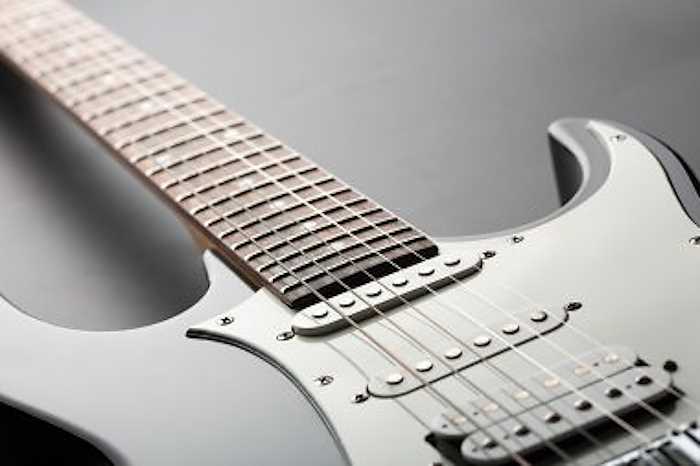
Breaking In New Electric Guitar Strings: Facts vs. Myths
Have you ever wondered why new electric guitar strings sometimes don’t sound as expected right out of the package? It’s a common scenario for guitarists who anticipate a bright and resonant tone but sometimes don’t get exactly what they’re hoping for. There are secrets to breaking in new strings that can vastly improve your overall sound and playing experience. Let's delve into these secrets and the common myths surrounding them.
Understanding Why Strings Need Breaking In
Breaking in new electric guitar strings is essential for any guitarist, whether you're playing at home, on stage, or in the studio. When strings are brand new, they can often sound overly bright and harsh, lacking the warmth and familiarity you’ve come to love from your older strings. Additionally, fresh strings are prone to going out of tune more frequently, which can be frustrating.
Why New Strings Behave Differently
New strings undergo a process called “stretching out”. Initially, they need time to stabilize against the pressure of being tuned and the physical changes that occur from playing. Right out of the packaging, the tension, elasticity, and material properties of new strings aren't yet optimized for performing their best, which is why they require a break-in period.
The Impact of Materials on String Behavior
The composition of your guitar strings makes a significant difference in their break-in period. Nickel-plated, stainless steel, and pure nickel strings each have unique properties. Nickel-plated strings are often chosen for their balanced tone, stainless steel for brightness and durability, and pure nickel for warmth. Understanding the material helps you anticipate how your strings will settle over time.
| String Material - | Primary Characteristics |
|---|---|
| Nickel-Plated - | Balanced tone, good sustain |
| Stainless Steel - | Bright, durable, excellent for aggressive play |
| Pure Nickel - | Warm, vintage sound, gentle on fingers |
Facts About Breaking In New Strings
The reality of breaking in new strings encompasses several straightforward but effective practices. Some techniques are rooted in fact, proven by years of guitarist wisdom, while others might still be speculative.
Consistent Playing Time
It's a simple but true fact that consistent playing naturally breaks in strings. By regularly playing, you allow the strings to gradually adjust to tension changes and physical wear, leading to a stabilized and fuller tone over time.
Stretching Strings Manually
Stretching new strings manually before playing is a well-known technique. After installing new strings, gently stretch them by pulling upwards along the length of the string. This helps to align the coil and reduces the initial detuning amount.
Tuning and Retuning
Frequent tuning and retuning during the initial hours of installing new strings can seem tedious but is effective. Regular tuning helps the strings settle faster, as each adjustment tightens the coils and adjusts the equilibrium.
Exploring Myths Surrounding String Break-In
For every musician lugging their gear to a jam session, there are myths that circulate in practice rooms and gear forums. Let’s consider some common misconceptions and separate fact from fiction.
Myth: “Strings Sound Best Right Out of the Package”
Many believe that the freshest set of strings will always offer the best sound, but this isn’t always true. While new strings do have a crispness to their tone, they often require some playing time for their full potential to be realized and for a more balanced sound to develop.

Myth: “Boiling Strings Extends Their Life”
The idea of boiling strings has been around for some time, purportedly to extend the life of the strings and clean them. However, this can actually damage the string's material and weaken their structure. It is more effective to use proper string cleaning techniques and change strings regularly.
Myth: “All Strings Require the Same Break-In Time”
An often-repeated misconception is that all strings behave and respond similarly. The truth is, factors such as gauge, material, and playing style markedly affect how long and under what conditions strings will settle. Personal experience and experimentation are key.
Practical Tips for Efficient String Break-In
Armed with the right techniques, your new strings will not only sound great but will feel better under your fingers. Let’s highlight some practical tips to ensure a smooth break-in process.
Select the Right String Gauge
Choosing a string gauge suited to your playing style and guitar setup can optimize your tone and feel. Heavier gauges offer thicker tone and sustain but can be more demanding on finger strength, while lighter gauges allow for easier bends and speed.
Proper String Installation
Ensure you’re installing strings correctly by securing them well at both the tuning pegs and bridge. This reduces slipping and maintains consistent tension across the string’s length, helping with faster break-in.
Use String Lubricants
String lubricants can aid in reducing friction between the string and fretboard, adding to the life and feel of the strings. It’s beneficial in not only making play smoother but in minimizing break-in time by easing the strings into their settled position.
Environment and Maintenance
Humidity and climate can affect how strings settle. Keeping your guitar in a stable environment protects not only the strings but your entire instrument. Regular cleaning renders long-term benefits towards optimum string performance.
Creating a Long-Lasting Relationship with Your Strings
Remember the connection between you and your strings goes beyond the initial break-in period. Continuing care impacts the lifespan and performance of your strings long after their initial break-in.
Regular Replacement
No matter how well you treat your strings, they won't last indefinitely. Know your style and change your strings as you see fit, whether for performance readiness or routine practice. Proactivity guards against unexpected failures and sound degradation.
Recognizing Wear and Tear
Visual and tactile cues give insight into when strings need changing. Fret wear, rust spots, or diminished tone are indicators that your strings may be past their prime. Staying in tune with these signals ensures you’re always ready to play with authenticity and clarity.
In summarizing, the magic of music is greatly influenced by how well your instrument responds to you, and new strings play a pivotal role in that relationship. By distinguishing facts from myths in breaking in new electric guitar strings, you not only enrich your playing but also enhance your guitar’s contribution to your sound journey. Whether intricately composing a new piece or jamming with friends, knowing these secrets may unlock a new dimension to your music.
Visit our guitar string section!
